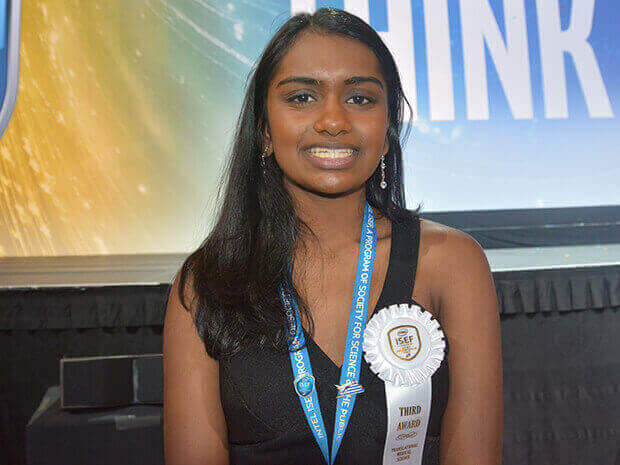In her spare time, enterprising 16-year-old Kavya Kopparupu has developed a cheap and effective 3D printed system to diagnose diabetic retinopathy. It’s a tool that could transform the lives of patients that might otherwise turn blind.
How much did you achieve at the age of 16? Maybe don’t compare yourself to Kavya Kopparapu – the 16-year-old genius who is making it quick and easy to preliminarily diagnose diabetic retinopathy.
Impressively, the teenager’s idea makes diagnosis as easy as slotting a smartphone into 3D printed device and downloading an app. Dubbed Eyeagnosis, the teenager’s solution presents an inexpensive and seemingly reliable tool for immediate diagnoses.
Kopparapu’s motivation to create Eyeagnosis is her grandfather, a sufferer of diabetic retinopathy. He lives in a small city in East India, where timely diagnosis is not certain. Kopparapu explains: “The lack of diagnosis is the biggest challenge… In India, there are programs that send doctors into villages and slums, but there are a lot of patients and only so many ophthalmologists.”
Before turning to the invention of life-changing diagnosis devices, Kopparapu self-taught herself an array of computer languages, in addition to organizing a research symposium and a non-profit. It would seem that with technical and management skills under her belt, developing a product would be, seemingly, a cinch.
Working with her 15-year-old brother, Neeyanth, and classmate Justin Zhang, the group set about researching what would become Eyeagnosis.
Speaking with computational pathologists, biochemists, ophthalmologists, epidemiologists, neuroscientists, physicists, and experts in machine learning over email, the team settled on a plan of action.

Creating Eyeagnosis
To do the nuanced work of diagnosing Eyeagnosis users, the team chose a “convolutional neural network”. A type of machine learning that analyzes images, it learns to recognize patterns as it goes. Kopparupu and her team use a Microsoft-developed network called ResNet-50.
Using 34,000 retinal scans from a research library database, they trained their neural network to spot the signs of diabetic retinopathy to an accuracy equal to that of a human pathologist. Plugged in to a smartphone app, that the team also developed, the neural network just needs a clear image of a patient’s retina to work.
For the physical element of their device to team turned to 3D printing. The current design is a smartphone frame that also houses a magnifying lens. The phone’s camera flash illuminates the patient’s retina to take a clear image. With this the AI gets to work looking for the telltale signs of diabetic retinopathy.
It is hoped the system could allow any local clinician to make such specialist diagnoses, referring their patients to hospital for further treatment.
The first Eyeagnosis prototype underwent tests late last year at Aditya Jyot Eye Hospital in Mumbai, India. The system has initially been used on five patients at the hospital. It has been accurate in every case.
Inspired by this amazing teen? Head over to her Girls Computing League for more jaw dropping evidence of her brilliance.
Source: IEEE

License: The text of "US Teen Invents “Eyeagnosis” System to Diagnose Diabetic Retinopathy" by All3DP is licensed under a Creative Commons Attribution 4.0 International License.